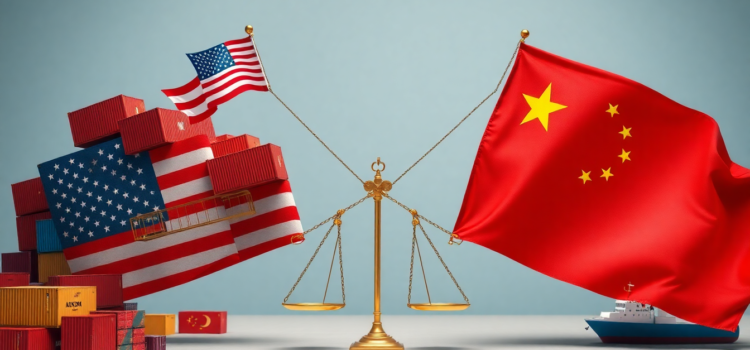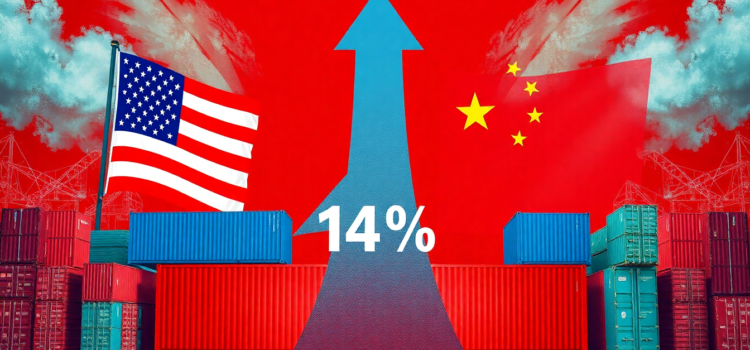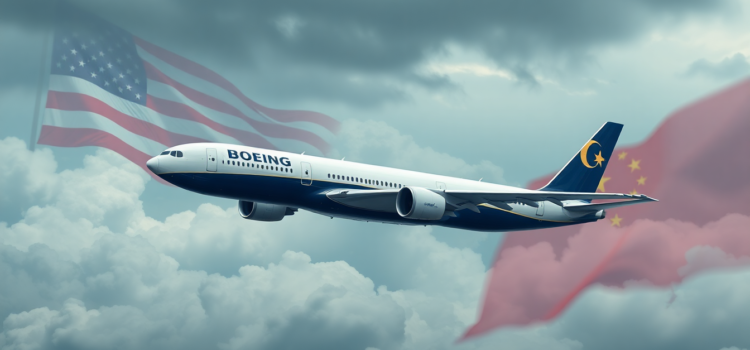
US-China Trade War Escalates: $2.3T Imports Facing Tariffs, 0.2% Global Trade Loss in 2025
The ongoing US-China trade war has taken a significant turn in 2025, with repercussions that are sending ripples across the global economy. Recent developments have resulted in over $2.3 trillion or approximately 71% of US imports becoming subject to new tariffs. As tensions between the two economic powerhouses intensify, the global trade landscape finds itself at a crucial juncture, facing potential shrinkage and increased market volatility.
The Surge in US Tariff Rates
In early 2025, the average US tariff rate on Chinese exports soared dramatically to an unprecedented 124.1%. This is a stark contrast to the 20.8% at the year’s onset and reflects a more than 40-fold increase from pre-trade war rates observed in 2018. Aggressive tariff strategies, including a notable 34% hike in customs duties on Chinese imports in April, have escalated the effective tariff rate on certain goods up to a significant 145%.
- Increased tariffs projected to reduce US GDP by 0.2%.
- Anticipated federal revenue to climb by $166.6 billion, or 0.55% of GDP.
China’s Retaliatory Measures
Reacting to the US’s tariff escalation, China has strategically imposed tariffs on US goods, with rates soaring to as much as 125%. Despite retaining significant leverage through its substantial holdings of US Treasury bonds, amounting to $772.5 billion or about 2% of the US public debt, China’s economy also faces risks if it chooses to exercise this leverage aggressively.
Impact on Global Trade in 2025
Projections indicate a 0.2% reduction in the global volume of merchandise trade by the end of 2025 owing to the trade conflict. This loss translates to nearly three percentage points of missed potential growth in world trade volumes. As tariffs mount, supply chains remain disrupted, with particular focus needed on sectors such as clean energy transition and rare earth export controls from China.

Trade Barriers and Negotiations Breakdown
With increased trade barriers obstructing US-China commerce, negotiations have come to a standstill, highlighting significant hurdles in reaching a mutual agreement. This impasse threatens bilateral trade volumes and highlights the urgent need for diplomatic engagement to mitigate long-term economic fallout.
Conclusion
As the US-China trade war escalates, the economic landscape faces considerable challenges. From heightened tariffs impacting the global trade to the effect on future negotiations, the 2025 trade climate necessitates strategic dialogue to alleviate prolonged consequences. Stakeholders are urged to remain vigilant and explore potential opportunities amidst the difficulties.
FAQs
What are the long-term effects of the US-China trade war in 2025?
The trade war’s long-term effects include heightened global market instability, potential expansions of national tariffs worldwide, and hindered progress on multi-lateral trade deals.
How have US tariffs in 2025 impacted China’s exports?
US tariffs in 2025 have escalated significantly, imposing an average rate of 124.1%, affecting a large portion of China’s export market, which could lead to strained economic relations and reduced export volumes.
How is the US economy reacting to tariff increases?
The US economy faces a potential GDP loss of 0.2% due to the recent tariff policies, though federal revenue is expected to see an upswing due to the increased duties.
Are there exceptions in the imposed tariffs?
While massive tariffs are mainly in place, certain exemptions exist, particularly in critical sectors like electronics, where supply chain dispersions could cause substantial economic disruption.
Why are trade negotiations difficult to achieve?
The trade negotiations are challenging due to fundamental policy differences, competitiveness in key markets, and the ongoing tit-for-tat tariff approach adopted by both nations.










![Mattel CEO Calls for Zero Tariffs on Toys as Less Than 40% Production Remains in China in 2025; US Tariff Exposure at 20% of Global Output[3][4][1]](https://upnews.today/wp-content/uploads/2025/04/f-rec7MnkEhU1qCjUI1-attel-CEO-Calls-for-750x350.png)


![EU fines Apple €500M, Meta €200M under 2024 Digital Markets Act; fines up to 6% global turnover possible under Digital Services Act from 2024 enforcement start[2][4].](https://upnews.today/wp-content/uploads/2025/04/f-recUy0QbRsZNQbGwX-U-fines-Apple-E500M-750x350.png)










Comments